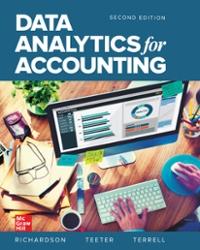Question
Two athletes of equal ability are competing for a prize of $12,000. Each is deciding whether to take a dangerous performance-enhancing drug. If one athlete
Two athletes of equal ability are competing for a prize of $12,000. Each is deciding whether to take a dangerous performance-enhancing drug. If one athlete takes the drug and the other does not, the one who takes the drug wins the prize. If both or neither take the drug, they tie and split the prize. Taking the drug imposes health risks that are equivalent to a loss ofXdollars.
Complete the following payoff matrix describing the decisions the athletes face.
Enter Player One's payoff on the left in each situation, Player Two's on the right.
Player Two's Decision
Take Drug Don't Take Drug
Player One's Decision Take Drug , ,
Don't Take Drug , ,
True or False: The Nash equilibrium is taking the drug if X is less than $12,000.
True
False
Suppose there was a way to make the drug safer (that is, have lowerX ).
Which of the following statements are true about the effects of making the drug safer? Check all that apply.
It lowers the likelihood of taking the drug.
It increases the payoff of taking the drug.
It has no effect on the athletes' decision to take the drug if X remains greater than $6,000.
Step by Step Solution
There are 3 Steps involved in it
Step: 1

Get Instant Access to Expert-Tailored Solutions
See step-by-step solutions with expert insights and AI powered tools for academic success
Step: 2

Step: 3

Ace Your Homework with AI
Get the answers you need in no time with our AI-driven, step-by-step assistance
Get Started


